Fascination Thailand: Discover the endangered wildlife and its protection!
Discover Thailand's fascinating wildlife: from endemic species to endangered animals to conservation efforts and cultural significance.
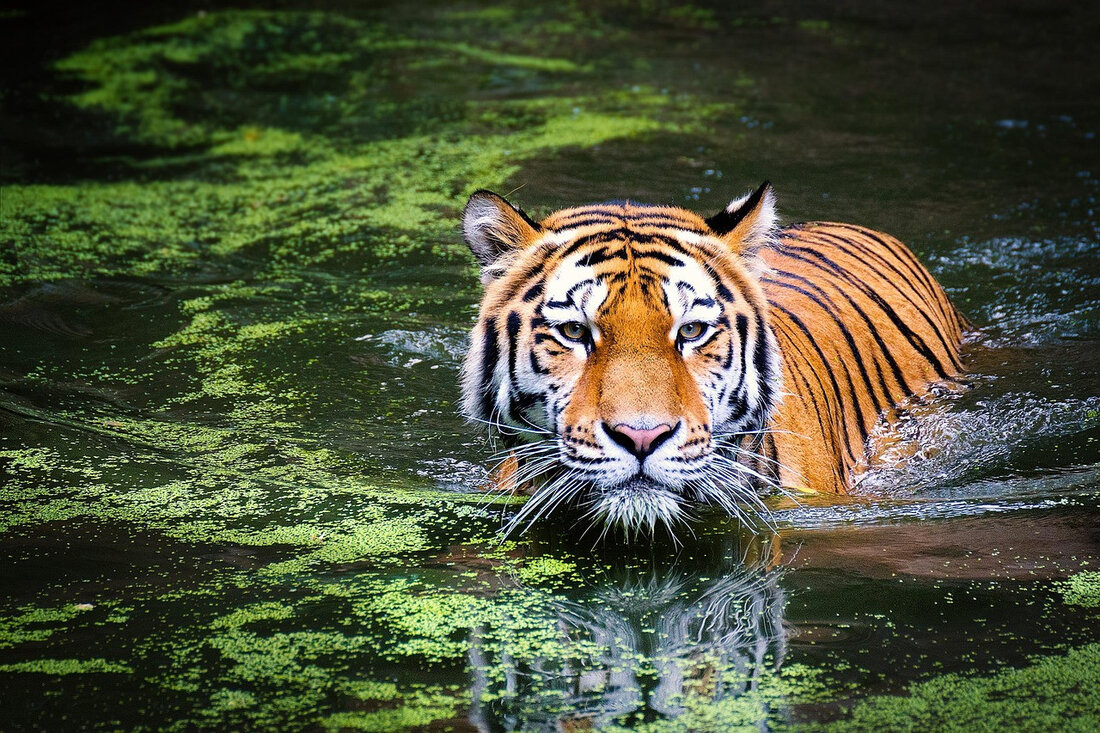
Fascination Thailand: Discover the endangered wildlife and its protection!
Thailand, the heart of Southeast Asia, is a country that not only impresses with its cultural diversity and breathtaking landscapes, but also with impressive wildlife that can hardly be surpassed in its abundance of species. From dense rainforests to barren mountainous regions to mangrove-rich coasts, the country offers habitats for a variety of creatures that captivate both local and international nature lovers. This biological diversity reflects the country's complex history and geography, which, as an interface between tropical and subtropical zones, represents a unique stage for evolutionary wonders. Many of these animals are not only fascinating in their behavior and appearance, but also play a central role in Thailand's ecosystems and culture. Let's immerse ourselves in the world of the wild inhabitants of this extraordinary country.
Introduction to the wildlife of Thailand
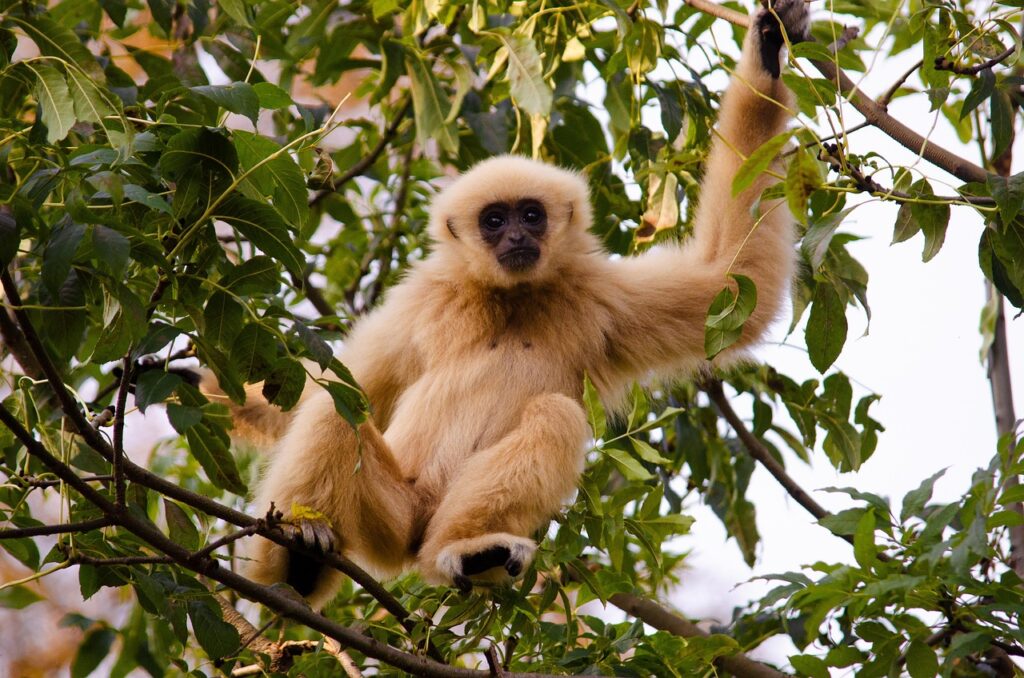
Imagine hiking through an emerald green jungle while the songs of exotic birds ring out above you and, somewhere in the distance, the deep call of a gibbon echoes through the treetops. In Thailand, this scene is not a mere fantasy but a tangible reality that reveals the immense diversity of this country's wildlife. With a landscape that ranges from high mountains to vast plains to coastal strips, mangrove swamps and offshore islands, the country offers countless habitats. The tropical monsoon climate supports a wealth of ecosystems - from dense forests and grasslands to wetlands and coral reefs - that provide home to approximately 302 species of mammals, over 980 species of birds, 320 reptiles, 120 amphibians and an untold number of insects.
This biodiversity is not only a spectacle of nature, but also an essential part of ecological balance. Every creature, from the tiny butterfly – of which there are around 1,100 species in Thailand – to the majestic elephant, the country's national animal, contributes to the stability of habitats. The Asian elephant (Elephas maximus indicus), unfortunately listed as endangered, not only embodies the strength and wisdom in Thai culture, but also shapes the forests as a landscaper, clearing paths and spreading seeds. But it's not just the large animals that impress; Even the smallest inhabitants, such as the numerous species of land snails in eastern Thailand, of which 125 species have been documented, play a role in decomposition and soil formation.
A look at the geographical diversity shows why Thailand is a biodiversity hotspot. National parks and wildlife sanctuaries such as Khao Yai, just a few hours from Bangkok, provide refuge for elephants, gibbons, Indian bison, wild boars and a variety of birds. Further south, Khao Sok beckons with tours from Krabi or Phuket, where visitors can meet elephants, bison and macaques. Those who explore the coastal region will find langurs, kingfishers and waterfowl in Khao Sam Roi Yot, accessible from Hua Hin. These protected areas are not only havens for wildlife, but also windows for nature enthusiasts who want to experience rare species in their natural environment, such as those found on The Wildlife Diaries is impressively described.
In addition to the well-known giants of the animal world such as elephants and the nine species of wild cats - including the Indochinese tiger and the clouded leopard, which can be spotted in the Huai Kha Khaeng Wildlife Sanctuary - there are also hidden treasures. Small cats such as the leopard cat and the fishing cat scurry through the forests, while two species of wild dogs, the dhole and the golden jackal, roam the landscape. Bears, both the Asiatic black bear and the sun bear, remain shy and rarely visible. Nineteen species of primates, including the white-handed gibbon and the black langur, swing among the treetops, while macaques are a familiar sight in many parks. Less visible, but just as fascinating, are the two species of slow loris, whose populations are threatened by the illegal wildlife trade.
However, the challenges facing this biodiversity should not be underestimated. According to the List of native species of Thailand on Wikipedia There are 264 mammal species on the IUCN Red List, of which three are critically endangered and 24 are classified as vulnerable. Of the birds, of which nearly 1,000 species occur in Thailand, about 50 are globally threatened and seven are considered locally extinct. Causes such as deforestation, illegal hunting and habitat destruction particularly affect large waterfowl and forest species. Even seemingly everyday animals like the pangolin, which is critically endangered, or the sambar deer, even more common in parks like Khao Yai, are under pressure.
Yet Thailand's wildlife remains a vibrant mosaic, ranging from urban parks with bustling life like the Finlayson's squirrel to remote forests with shy residents like the Malayan porcupine. Every habitat, whether city or wilderness, tells its own story of adaptation and survival waiting to be discovered.
Geographical diversity and habitats

A country like a kaleidoscope of nature – this is how Thailand could be described when you consider the diversity of its ecosystems. Every region, every difference in altitude and every climate zone forms a unique structure that enables life in a wide variety of facets. From the steamy depths of tropical rainforests to the salt-soaked coastal areas with their mangrove forests, there is a network of habitats that not only shape the wildlife, but also make the heart of any naturalist beat faster.
Let's start with the tropical rainforests, which represent a central pillar of biodiversity in Thailand. These ever-moist forests, typical of the tropical climate zone, thrive in a monsoon climate with annual rainfall of over 1,500 millimeters, often even between 1,800 and 2,800 millimeters. With average temperatures of 24 to 28 degrees Celsius and high humidity, they provide a stage for complex floor structure: from the ground through the layers of herbs and shrubs to the treetops, where lianas and epiphytes dominate the picture. Such forests, like those found in Khao Sok National Park in the south of the country, are home to an unimaginable diversity of species - from tiny arthropods to majestic mammals such as elephants. But the soils, often heavily weathered and nutrient-poor, represent a challenge that can only be overcome through perfect adaptations of the flora and fauna, as can be seen on Wikipedia is explained in detail.
At higher altitudes, where the air becomes cooler, the lowland rainforests transition into mountain rainforests, reaching altitudes of around 1,800 to 2,000 meters. These regions, such as northern Thailand around Chiang Mai, are shrouded in fog and provide a home for specialized species such as certain amphibians and birds. The constant change between humid warmth and cooler nights creates microclimates that produce their own unique animal world. Up here, far from the sultry lowlands, you can find rare reptiles and smaller mammals that have adapted to the steep slopes and dense moss blankets.
Away from the forests, the central plains of the country open up, where grasslands and savannas characterize the picture. These open spaces, often marked by seasonal flooding, provide space for larger herbivores such as the gaur, also known as the Indian bison, and various species of deer. The tropical savannah climate with distinct rainy and dry seasons creates a landscape in which animals have to adapt to extreme conditions. Wetlands that expand during the rainy season also attract a variety of waterbirds that forage in the shallow waters.
On the coast of Thailand, where the country meets the Gulf of Thailand and the Andaman Sea, completely different worlds unfold. Mangrove forests that thrive in brackish water form a dense root network that not only serves as protection against erosion, but also as a nursery for countless species of fish and crustaceans. These labyrinthine ecosystems are home to macaques, which skillfully climb through the branches, as well as rare water birds such as the kingfisher. The salty air and constant tidal movement create conditions in which only specialized species can survive.
Further afield, in the coral reefs of offshore islands such as Phuket or the Similan Islands, an underwater world opens up that is just as rich in life as the forests on land. These reefs, formed from the calcareous skeletons of tiny organisms, provide shelter and nourishment for a colorful variety of marine life - from tropical fish to sea turtles to the occasional shark. The warm, clear waters of the Andaman Sea are a haven for species that rely on stable temperatures and abundant food sources.
But all of these habitats are under pressure. Tropical rainforests, which are threatened worldwide, are also suffering from deforestation and illegal timber harvesting in Thailand, while coastal areas are threatened by pollution and overfishing. The loss of just one of these ecosystems would have far-reaching consequences for the wildlife that relies on the specific conditions. Looking at these diverse landscapes is not only a source of amazement at their beauty, but also a warning to recognize their fragility.
Endemic animal species

Hidden in the depths of the Thai forests and on the edges of remote rivers lurk creatures that cannot be found anywhere else in the world - truly unique specimens of nature. These endemic species, which make their home solely within the borders of Thailand, bear witness to an evolutionary history shaped by geographical isolation and diverse habitats. They are not only a treasure for biodiversity, but also a key to understanding how life develops under unique conditions.
One such wildlife gem can be found in the Khao-Nor-Chuchi-Kikker Game Reserve, home to a tiny frog that lives exclusively in southern Thailand. With its small size and inconspicuous appearance, it may seem inconspicuous at first glance, but it is considered a symbol of the country's biodiversity. This small amphibian has adapted perfectly to humid tropical forests, where it hunts for insects near streams and waterholes. Its existence highlights how specific microhabitats can promote the emergence of unique species.
The Siamese fighting fish offers a colorful contrast, whose iridescent scales and elegant fins have made it a popular aquarium resident worldwide. Originally native to the shallow, warm waters of Thailand, it lives in rice fields and slow-moving canals. Its aggressive nature, which earned it its name, reflects an adaptation to limited resources, with males fiercely defending their territory. Such behaviors are a window into the evolutionary strategies that emerge in isolated ecosystems.
In addition to these well-known representatives, there are also more shy residents who rarely come into the spotlight. The Banded Linsang, a small, nocturnal mammal, stalks the deciduous and evergreen forests of Thailand and neighboring countries such as Malaysia and Myanmar. With its slim body and preference for treetops, it remains invisible to most observers. Nevertheless, it plays an important role in the balance of the forests by controlling smaller animals as a predator. Its rarity makes it a particular focus for conservationists, who emphasize the importance of such species to the stability of ecosystems.
Another example of the uniqueness of the Thai fauna is the Agile Gibbon, whose population is concentrated in the Hala Bala Wildlife Reserve near the border with Malaysia. Moving through the treetops with breathtaking ease, these dexterous primates are a living testament to adaptation to dense forest landscapes. Unfortunately, they are endangered by habitat loss and illegal animal trade, which only underlines their importance in preserving biodiversity. How on Weekly flash As highlighted, such endemic species are essential to understand the evolutionary processes and diversity of life.
The importance of these unique animals goes far beyond their mere existence. They contribute to genetic diversity, which makes ecosystems more resilient to change. Biologists like Dr. Apirak Songrak from Chiang Mai point out that Thailand's isolated habitats - from mountain forests to coastal wetlands - have encouraged the emergence of such species. Each of these creatures is a piece of the puzzle in the big picture of global biodiversity, showing how life evolves and adapts under specific conditions.
But the challenges for these special residents are immense. Habitat destruction through deforestation, environmental pollution and the effects of climate change threaten their existence. Marine biologists like Dr. Nantachai Pongpattananurak from Bangkok emphasize that protecting these species is not only a question of nature conservation, but also of cultural responsibility. Local communities play a crucial role by using traditional knowledge and educational programs to raise awareness of the value of these animals.
The stories of these endemic species are intertwined with the landscape of Thailand, from the dense jungles to the tranquil waters. They invite you to delve deeper into the mysteries of nature and recognize the fragility of this unique heritage.
Endangered animal species
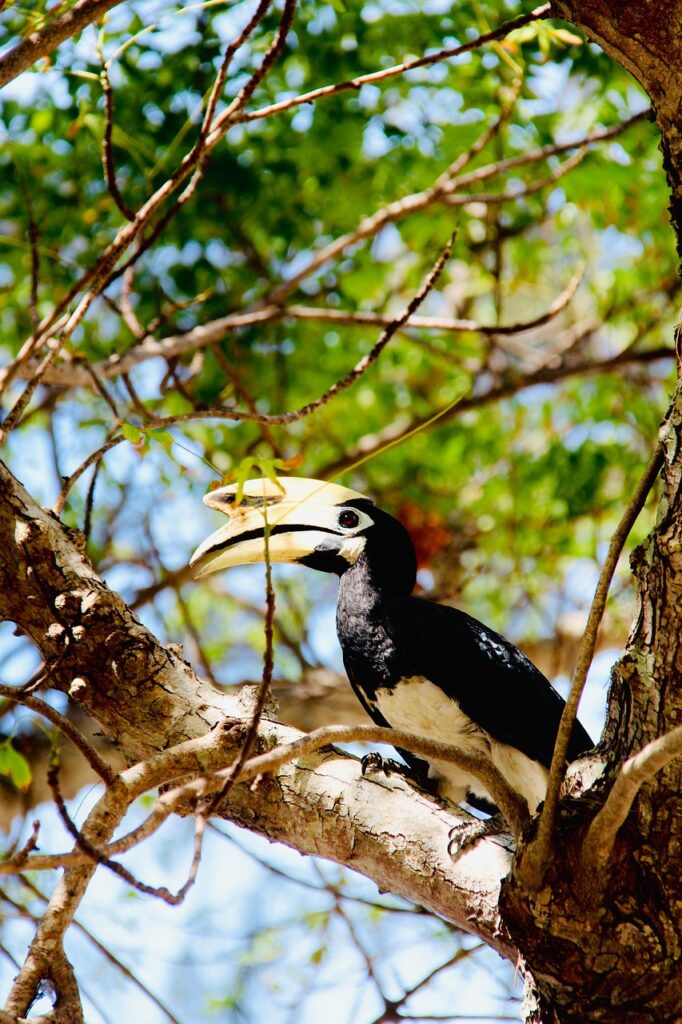
When the forests grow quiet and the birdsong stops, a bitter truth about Thailand's wildlife is revealed: many of its inhabitants are struggling to survive. Behind the country's impressive diversity lies an alarming reality in which numerous species are being pushed to the brink of extinction. From majestic predators to shy forest birds, these endangered creatures exemplify the global challenges facing nature.
A particularly bleak picture emerges among mammals. Of the 264 species listed on the IUCN Red List, three are considered critically endangered, 24 are endangered and two are considered potentially threatened. The Indochinese tiger, whose population is estimated at around 600 individuals worldwide - half of them in Thailand - is a sad symbol of this decline. Once the ruler of the forests, it now only lurks in protected areas like the Huai Kha Khaeng Wildlife Sanctuary. The pangolin is also threatened, and its scales are highly sought after on illegal markets, which has drastically reduced its population.
The bird world is hardly less cause for concern. With nearly 1,000 species, about 50 of which are globally threatened, Thailand has already lost at least seven species locally. Large waterfowl and forest species in particular are suffering from changes to their habitats. As early as 1991, 159 resident and 23 migratory bird species were classified as endangered or vulnerable, a number that has barely improved since then. These losses illustrate how sensitive the balance of nature is to disturbances, be it through human intervention or environmental changes.
What forces are driving this alarming decline? A central factor is the destruction of habitats, particularly through deforestation and illegal timber harvesting. Tropical rainforests, once havens for countless species, are shrinking rapidly, especially in lowland areas where agricultural expansion and industrial projects are taking over. Species such as the sun bear or the agile gibbon, which rely on dense forests, lose their home and thus their chances of survival.
Another serious influence is hunting, both illegal and traditional. Many animals, including the Asian elephant and clouded leopard, are sought after for their body parts or as trophies, further weakening their populations. Added to this is the illegal wildlife trade, which particularly affects species such as the slow loris, whose shy nature makes it a sought-after item on black markets. These practices not only remove individuals from their ecosystems, but also destabilize entire food chains.
Beyond these direct threats, global changes such as climate change have an impact. Higher temperatures and changing rainfall patterns are affecting the availability of food and water, which is particularly devastating for species with specific requirements. Coral reefs, home to many marine life, are suffering from warming and acidifying oceans, while forest species face unpredictable dry spells. Such environmental changes exacerbate the already precarious situation of many animals, as noted Wikipedia is impressively documented in the overview of Thailand's native species.
Pollution, whether from plastic waste in coastal areas or pesticides in agricultural regions, also contributes to the risk. Rivers and lakes, lifelines for numerous fish species and amphibians, are becoming increasingly polluted, which is undermining the food supply of many animals. Particularly in urban fringe areas, where people and nature meet, it becomes clear how profoundly human activities intervene in the sensitive networks of the wilderness.
The consequences of this decline in species extend far beyond the disappearance of individual animals. Every lost link in the chain of biodiversity weakens the stability of entire ecosystems that are essential for the supply of food, water and other resources. The loss of a predator such as the tiger can lead to an overpopulation of prey, while the absence of pollinators such as certain species of butterflies - of which Thailand knows about 1,100 - threatens plant reproduction. This creates a web of dependencies whose disruption has far-reaching consequences.
National parks and protected areas
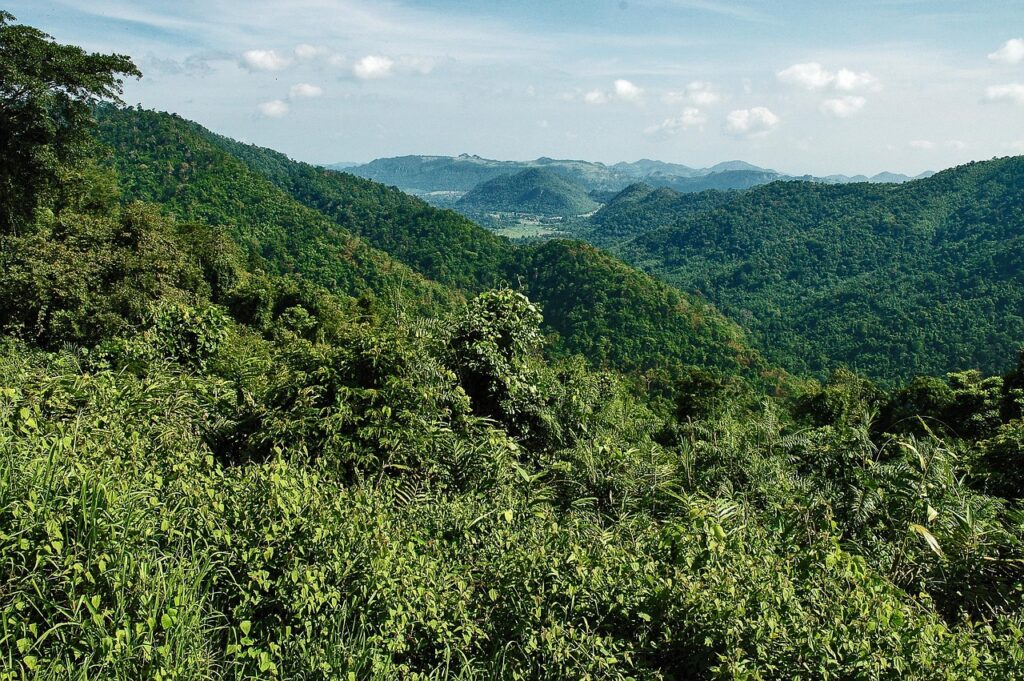
In the middle of Thailand's wilderness, where nature unfolds its untamed splendor, bastions of protection rise, serving as the last refuges for countless animal species. These national parks and protected areas, scattered across the country, preserve not only breathtaking landscapes but also the fragile balance of biodiversity. They are windows into a world where elephants roam through dense forests, rare birds glide over emerald green valleys and shy predators prowl at dusk.
One of the most important retreats is the Kaeng Krachan National Park, the largest of its kind in Thailand. Only about 85 kilometers from Hua Hin, this area covers an impressive area and provides habitat for a variety of creatures, including Asian elephants, Indian bison and a wealth of bird species. The dense forests and remote waterholes make it a hotspot for nature viewing, although many animals remain shy and only allow patient visitors a glimpse.
In the north of the country rises the Doi Inthanon National Park, named after the highest mountain in Thailand. About 100 kilometers from Chiang Mai, it offers a cool refuge at higher elevations, where mountain rainforests and mist-shrouded peaks are home to wildlife all their own. Here you can find rare amphibians and birds that have adapted to the cooler temperatures and humid environment. Hiking trails and viewpoints invite you to explore the diversity of this high-altitude landscape.
Further south, in the Gulf of Thailand, the Mu Ko Ang Thong National Marine Park attracts with a different facet of Thai nature. This archipelago of 42 islands, about 30 kilometers from Ko Samui, was established as a marine protected area in 1980 and covers 102 square kilometers. It is home to species such as the dusky leaf monkey, long-tailed macaque, leopard cat and white-bellied sea eagle. The rugged limestone cliffs, caves, and interior salt lakes provide unique habitats, while activities like snorkeling and kayaking bring visitors closer to the underwater world. Detailed information about this fascinating area can be found at Thai National Parks, where the diversity and special features of the park are impressively described.
The Ao Phang-Nga National Park promises a touch of adventure, known for the iconic James Bond Island, which became world famous thanks to the film of the same name. Located close to Phuket and Krabi, this area offers spectacular limestone formations and emerald lagoons that can be explored by canoe. The mangrove forests and coastal areas are refuges for numerous water birds and marine life that thrive in this unique ecosystem.
In the west of Thailand, the Erawan National Park, about 70 kilometers from Kanchanaburi, impresses with its famous Erawan Waterfalls. These cascading falls, surrounded by lush jungle, create an idyllic setting for animals such as macaques, wild boars and a variety of insects. The wet, forested trails not only provide recreation for hikers, but also protection for species that rely on undisturbed habitats.
The Doi Suthep-Pui National Park, just 10 kilometers from Chiang Mai, has a completely different character. Popular with hikers, it offers a mix of cultural sites such as temples and natural attractions such as waterfalls. The dense forests are home to gibbons and a variety of bird species that sing their songs in the treetops. The proximity to the city makes this park an easily accessible retreat that still maintains a wild, untouched side.
These protected areas are more than just scenic highlights; they act as vital corridors that allow animals to move, mate and maintain their populations. Whether it's the remote caves in Doi Phu Kha National Park in the north or the waterfalls of Huai Yang National Park near Prachuap Khiri Khan - each area contributes in its own way to ensuring the diversity of Thailand's wildlife. They invite you to experience the beauty and fragility of these habitats up close and to develop a deeper understanding of their meaning.
Birds of Thailand
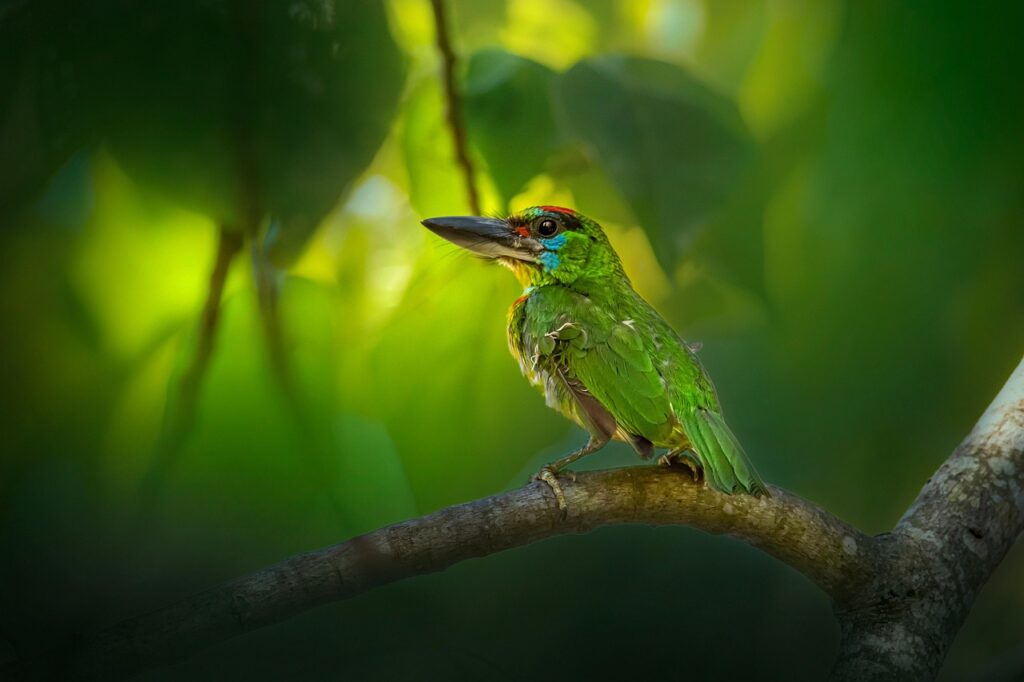
A concert of colors and sounds rises above the treetops of Thailand, filling the skies with life. With over 1,100 species of birds native to this country, the feathered diversity offers an unparalleled insight into the dynamics of tropical ecosystems. From the majestic heights of the northern mountains to the humid lowlands and coastal regions, each species reflects a unique adaptation to its environment and contributes in indispensable ways to the balance of nature.
A symbol of this diversity shines in the Siamese fire pheasant, the national bird of Thailand, whose iridescent plumage flashes in the country's forests. This species, typical of the Indo-Malayan Empire, shares connections with the fauna of the Indian subcontinent and the Sunda region. In addition to such striking representatives, there are also countless others, from tiny hummingbirds to impressive sea eagles, which thrive in a wide variety of habitats. Particularly in the winter months, migratory birds from the eastern Palearctic and the Himalayas enrich the scenery as they seek refuge in the wetlands and forests.
The northern mountain regions, foothills of the Tibetan plateau, are home to montane species such as the red-throated warbler and the mountain bulbul. These birds have adapted to cooler altitudes, where they forage for insects and berries in dense forests. In the lowlands and coastal areas, however, water birds such as the Kollari kingfisher or the white-bellied sea eagle, which fish in mangroves and estuaries, dominate. This diversity of habitats allows for an impressive range of species Wikipedia is documented in detail in the comprehensive list of birds of Thailand.
Beyond their beauty and song, these feathered inhabitants fulfill essential roles in their ecosystems. Many act as seed dispersers by consuming fruits and excreting the undigested seeds elsewhere, thereby helping to regenerate forests. Species such as the hornbill, with its distinctive beak, are particularly effective at transporting seeds over long distances, promoting genetic diversity in plant populations. Equally important is their function as pollinators, in which they transfer pollen when they visit flowers and thus ensure the reproduction of numerous plants.
Another central task is the control of insect populations. Birds such as the drongo and various species of tits eat huge amounts of insects every day, including pests that could otherwise threaten plants or agricultural crops. This natural pest control not only contributes to the health of forests, but also supports the food chain by providing food for smaller predators. Such interactions illustrate how closely the feathered actors are interwoven with other life forms.
However, many of these species face serious challenges. As early as 1991, 159 resident and 23 migratory bird species were classified as endangered or vulnerable, a number that has barely improved due to deforestation, illegal timber harvesting and habitat destruction. Large waterfowl and forest species are particularly suffering from the loss of their natural environments, especially in lowlands where agricultural expansion and urbanization are changing the landscape. Climate change further exacerbates these problems by altering migration patterns and affecting food sources, particularly putting young birds at risk from malnutrition.
The importance of these feathered residents extends far beyond their immediate surroundings. They serve as indicators of the health of an ecosystem - a decline in their populations often signals deeper problems such as pollution or habitat loss. Their presence in forests, wetlands and even urban fringe areas shows how adaptable they are, but also how urgent it is to protect their habitats. Every flap of wings, every call in the twilight tells a story of survival and balance worth hearing.
Mammals of Thailand
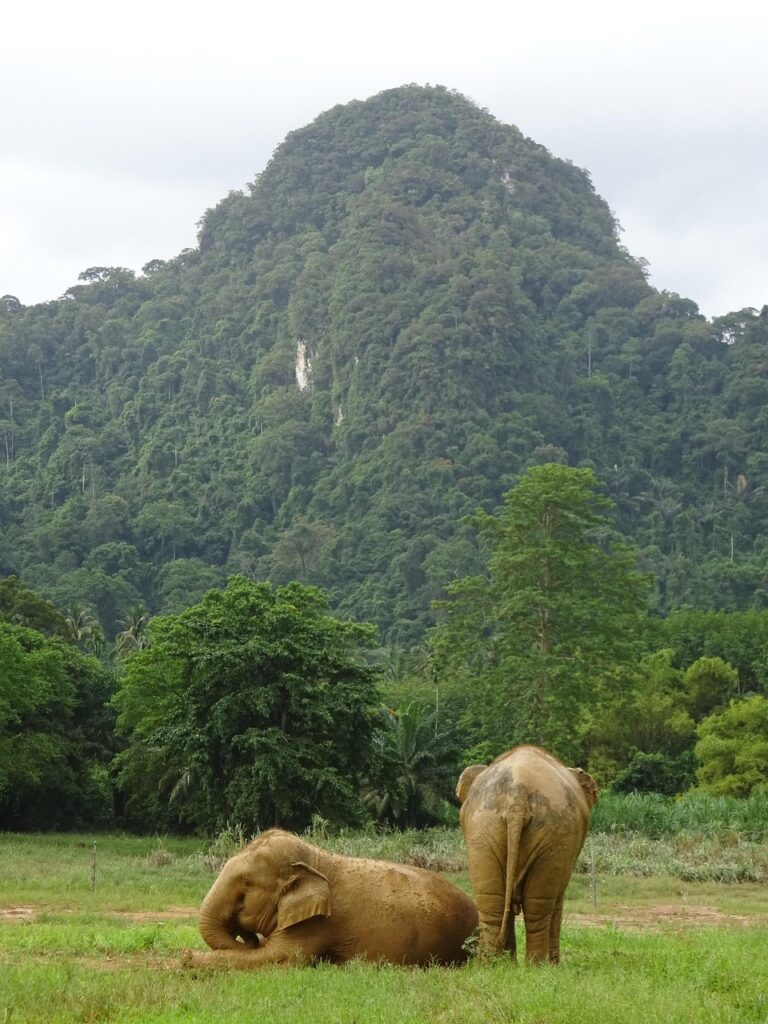
In the vast landscapes of Thailand, where jungle and savannah alternate, impressive figures move whose strength and adaptability reflect the diversity of nature. With over 300 species of mammals calling this country home, the region provides a stage for some of Southeast Asia's most fascinating creatures. Their lifestyles and the way they have adapted to tropical conditions tell stories of survival and harmony in an often challenging environment.
Above all, the Asian elephant rises, a giant that is not only revered as Thailand's national animal, but also plays a central role as a landscape designer. These powerful animals, often found in the border region with Myanmar, roam dense forests and grassy plains, where they clear paths with their massive bodies and spread seeds through their feces. Their thick layers of skin protect them from the scorching heat and thorny undergrowth, while their long trunks allow for remarkable precision in grasping food, from grasses to tree bark. Unfortunately, they are classified as endangered, which only underlines their importance for the preservation of ecosystems.
High treetops are the preferred habitat of gibbons, particularly the white-handed gibbon, whose acrobatic movements can be seen through the forests of Khao Yai National Park. With their long arms and dexterous hands, these primates have adapted perfectly to a life in the trees, where they collect fruits, leaves and occasionally insects. Their loud, melodic calls are used to communicate and mark their territory, an adaptation to the dense vegetation that makes visual contact difficult. Their social structure, often organized in small family groups, shows a close bond that ensures survival in the wild.
Predators like the leopard cat roam the forests and grasslands on quiet paws. This small wild cat, ideally camouflaged with its spotted fur, has adapted to a nocturnal life to hunt prey such as rodents and birds. Their keen senses and ability to move silently make them efficient hunters in dense tropical habitats. Despite their adaptability, they are under pressure from habitat loss, a fate shared by many of the 264 mammal species on the IUCN Red List Wikipedia is described in detail.
The dhole, also known as the Asian wild dog, shows a completely different survival strategy. These social predators hunt in packs, which allows them to take down larger prey such as deer, despite their relatively small body size. Their endurance and coordination are crucial in the open savannas and forests, where they travel long distances to find food. Their reddish-brown coat color provides camouflage in the undergrowth, while their sharp teeth and powerful jaws are adapted to the challenges of a life as a hunter.
Also lurking in the dense forests is the Indochinese tiger, an apex predator whose population is estimated at around 300 individuals in Thailand. With their striped fur, which makes them almost invisible in the dense vegetation, they are masters of stealth. Their powerful muscles and sharp claws enable them to overwhelm prey such as wild boars or deer with a well-aimed jump. These adaptations to a solitary life in tropical forests make them impressive hunters, but deforestation and hunting pose a massive threat to their existence.
The coasts and Gulf of Thailand showcase another facet of mammal diversity with the Bryde's whale, a gentle giant that feeds on krill and small fish. Its streamlined body shape and ability to filter large amounts of water through baleen plates are perfect adaptations to life in the open sea. Often found near fishing grounds, these marine mammals navigate the warm waters with an elegance that belies their enormous size.
The lifestyles of these mammals, from mighty elephants to shy leopard cats, illustrate the incredible range of strategies they have developed to survive in Thailand's diverse habitats. Each species contributes in its own way to the balance of ecosystems, whether through shaping the landscape or controlling prey populations, and shows how closely they are interwoven with their environment.
reptiles and amphibians
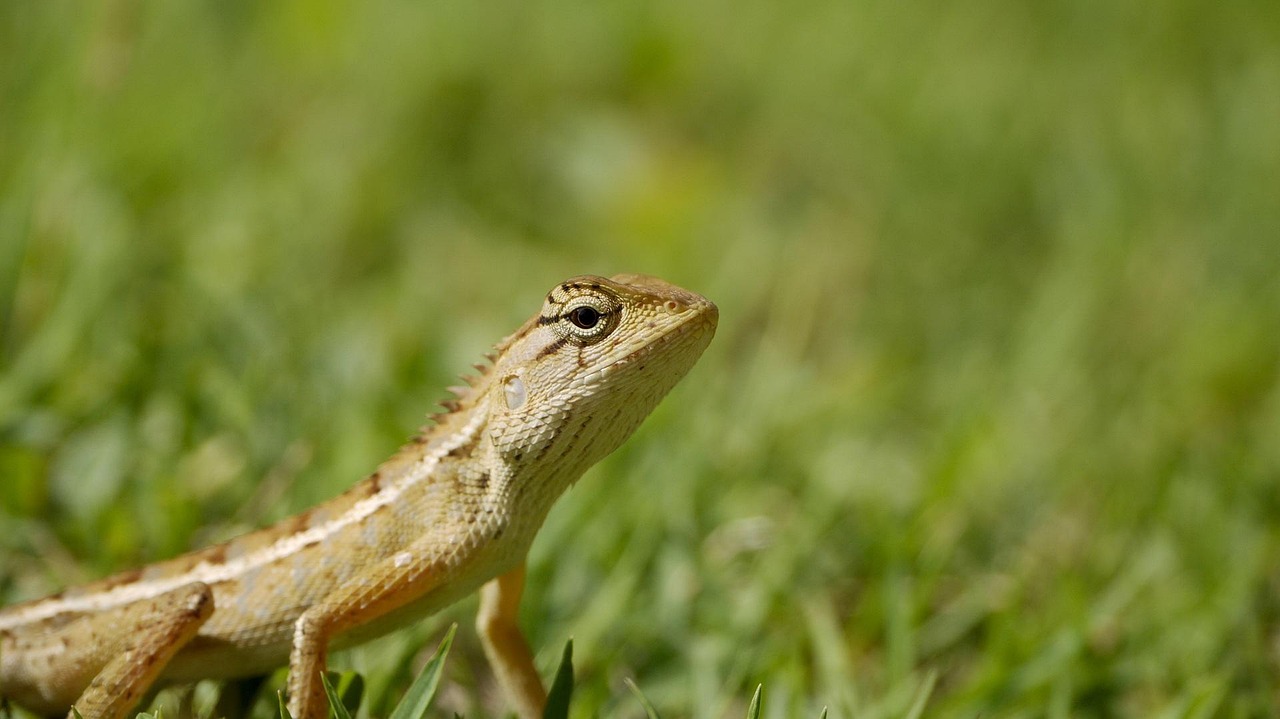
Beneath the shimmering water surfaces and hidden undergrowth of Thailand, creatures glide and hop, their cool skin and primal appearance reflecting a bygone era of the earth. With over 320 species of reptiles and 120 amphibians, this country offers an impressive variety of scaly and slippery inhabitants that thrive in a variety of habitats. Their presence, often inconspicuous yet essential, shapes tropical ecosystems in ways that seem both fascinating and mysterious.
The most fascinating representatives of reptiles include the numerous species of snakes, around 100 of which occur in Thailand. These include harmless blind snakes such as the widespread Indotyphlops braminus, which burrows into the ground and searches for ants and termites in moist, humus-rich soil. Equally impressive are the powerful reticulated pythons (Malayopython reticulatus), which lurk in forests and wetlands and use their enormous strength to overwhelm prey such as birds or small mammals. These snakes prefer proximity to water, where they cleverly camouflage themselves and wait for prey, a behavior that highlights their adaptation to the humid tropics.
Crocodiles lurk in the country's rivers and swamps, their primal presence exuding a quiet menace. The Siamese crocodile, a critically endangered species, has adapted to brackish waters and mangroves, where it uses its powerful jaws to hunt fish and occasionally smaller mammals. Their armored skin and ability to remain underwater for long periods make them perfect hunters in these murky, often difficult to access habitats. Such waters also provide a home for the Malayan softshell turtle (Dogania subplana), which, with its flat shell and muscular head, lives in rocky streams at higher altitudes and feeds on snails, such as on Wikipedia is impressively described.
In addition to reptiles, amphibians also populate the damp corners of Thailand, where they are often found near water sources. The Khao Nor Chuchi kikker, an endemic frog to the south of the country, has adapted to tropical rainforests where it forages for insects near streams. Its small size and inconspicuous coloration protect it from predators, while its sticky toes make it easier for it to climb on damp ground. Such adaptations are typical of many of the 120 amphibian species that thrive in the country's moist, warm conditions.
The habitats of these creatures span a wide range of ecosystems, reflecting their diversity and adaptability. Tropical rainforests, such as those found in Khao Sok National Park, provide shelter for species such as the Keeled Slug-Eating Snake (Pareas carinatus), which specializes in snails and forages in the dense vegetation. The moist, shady environment of these forests is ideal for amphibians, which rely on constant moisture to keep their skin moist and lay their eggs.
At higher altitudes, such as the mountain forests of Doi Inthanon National Park, specialized reptiles such as the Slender Blind Snake (Indotyphlops porrectus), which lives in the cooler, foggy regions of the north, can be found. These snakes have adapted to an underground life, where they dig in loose soil for small prey. Amphibians at these altitudes, often smaller frogs and salamanders, take advantage of the cooler temperatures and abundant rainfall to survive in hidden pools and under moss.
On the coasts and in mangrove areas, such as in Ao Phang-Nga National Park, species such as the Banded File Snake (Acrochordus granulatus), which has adapted to life in brackish water, thrive. Their scaly skin and ability to hunt in saline environments make them a typical inhabitant of these transition zones between land and sea. Amphibians such as certain species of toads also find food and protection in the moist, salt-rich soil, where they reproduce in the rainy season.
The diversity of these reptiles and amphibians, from deadly snakes to tiny frogs, shows how diverse Thailand's tropical habitats are. Their adaptations to specific environments – be it digging in the ground, lurking in the water or hopping through damp undergrowth – illustrate their role in the ecological fabric, where they help shape the balance as both hunter and prey.
Marine life
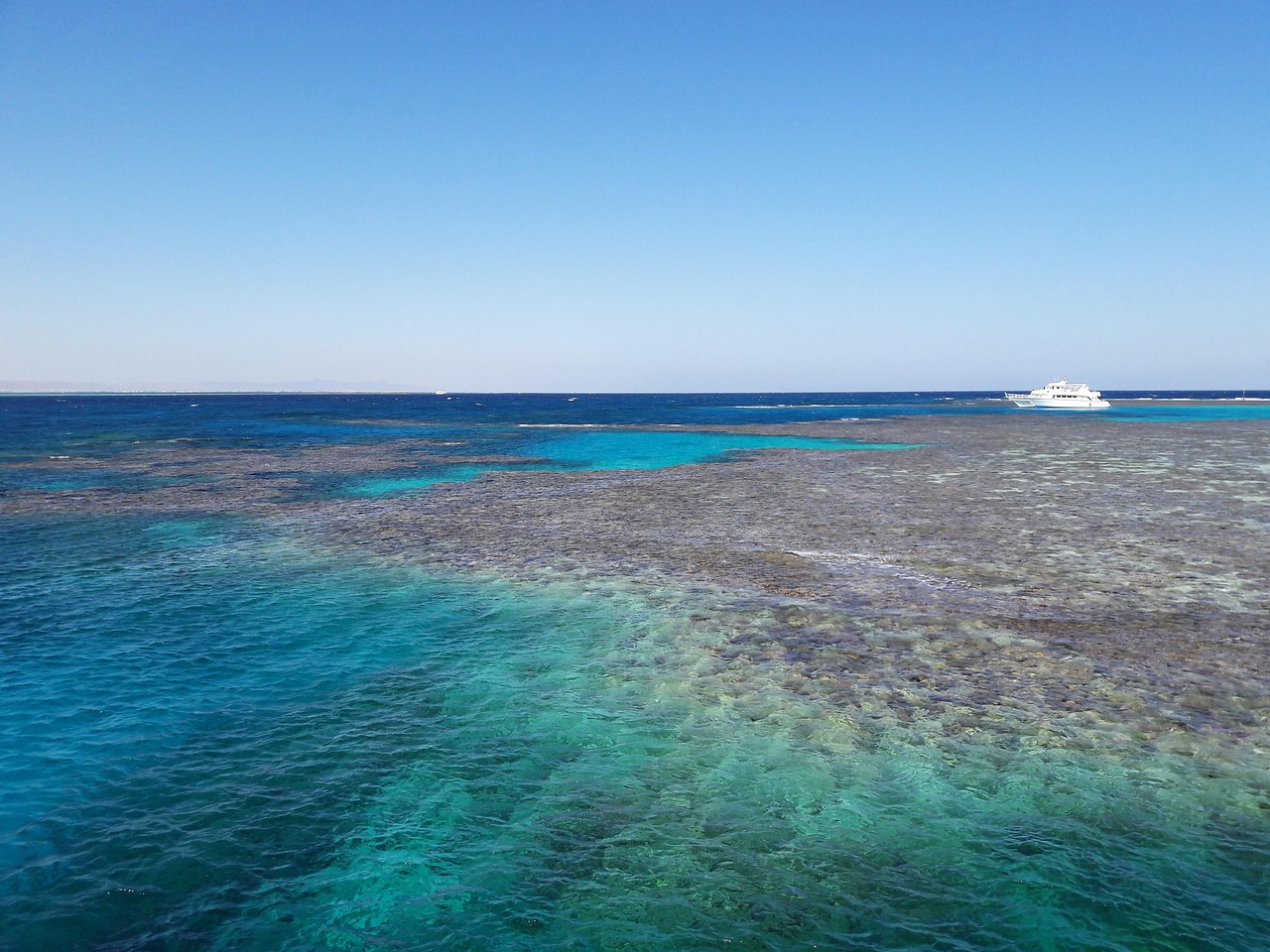
Dive into the azure depths of the Andaman Sea or the Gulf of Thailand and a world of dazzling colors and vibrant life unfolds before your eyes. A hidden kingdom beneath the waves, Thailand's marine wildlife extends across vast coastal areas and offshore islands, where coral reefs are living metropolises of the ocean, home to an untold variety of creatures. These underwater landscapes, characterized by tropical warmth and clear waters, offer a habitat that is as rich as it is fragile.
At the center of these aquatic wonder worlds are the coral reefs, impressive structures built by hard corals (Scleractinia) and other reef-building organisms such as fire corals. These reefs, which extend between 30° north and 30° south latitudes in water temperatures above 20°C, are found off the coast of Thailand in regions such as the Similan Islands or the Mu Ko Ang Thong National Marine Park. They form complex ecosystems that serve as nurseries and refuges for countless species - from tiny sponges and molluscs to colorful fish and majestic sea turtles.
Dancing among the inhabitants of these reefs are tropical fish like the clownfish, whose bright orange-and-white stripes flash between the tentacles of sea anemones. These small creatures have developed a symbiotic relationship with their hosts, providing them with protection from predators while providing scraps of food in return. Equally fascinating are the parrotfish, whose powerful beaks bite off coral to get at algae, inadvertently contributing to the formation of sand that forms beaches. Such interactions illustrate the close interconnectedness within these underwater ecosystems.
Further out into the open waters, gentle giants like the whale shark glide through the depths. At up to 12 meters long, this plankton eater, found in the Gulf of Thailand and off the coast of the Andaman Islands, is an impressive yet harmless resident. Its streamlined shape and ability to filter enormous amounts of water are perfect adaptations to life in the open sea. Unfortunately, it is also an endangered species because overfishing and collisions with ships endanger its population.
The coral reefs themselves not only provide habitat, but also protect coastlines by refracting wave energy and preventing erosion. But these ecosystems are under enormous pressure. Global warming, which has already reached average temperatures nearly 1.4 degrees above pre-industrial levels, is threatening warm-water coral reefs through coral bleaching, in which the symbiotic algae (zooxanthellae) die off. Added to this is pollution, ocean acidification and overfishing, which further disrupt the delicate balance, as in Global Tipping Points Report is strongly warned.
The shallower waters near the coast are also home to dugongs, the gentle manatees that graze in the seagrass meadows of the Gulf of Thailand. Their fin-like forelimbs and broad, flat tail are ideally adapted to life in the water, where they move slowly through the underwater meadows. However, these shy marine mammals, which rely on undisturbed, nutrient-rich areas, suffer from habitat loss due to coastal development and pollution.
The diversity of marine wildlife is complemented by the presence of echinoderms such as sea urchins and starfish, which play an important role in the reefs. Sea urchins control growth on coral by grazing on algae, while sea stars, such as the dreaded crown-of-thorns starfish, can eat coral, causing damage in excessive numbers. This balance between destruction and regeneration shows how complex the food chains and interactions are in these underwater worlds.
Thailand's waters also harbor predators such as the blacktip reef shark, which searches for prey in the reefs. With its streamlined shape and keen senses, it is an efficient hunter, regulating populations of smaller fish to maintain ecological balance. Such top predators are essential to prevent overpopulation and the associated scarcity of resources, but they are also threatened by overfishing and habitat changes.
Human influence on wildlife
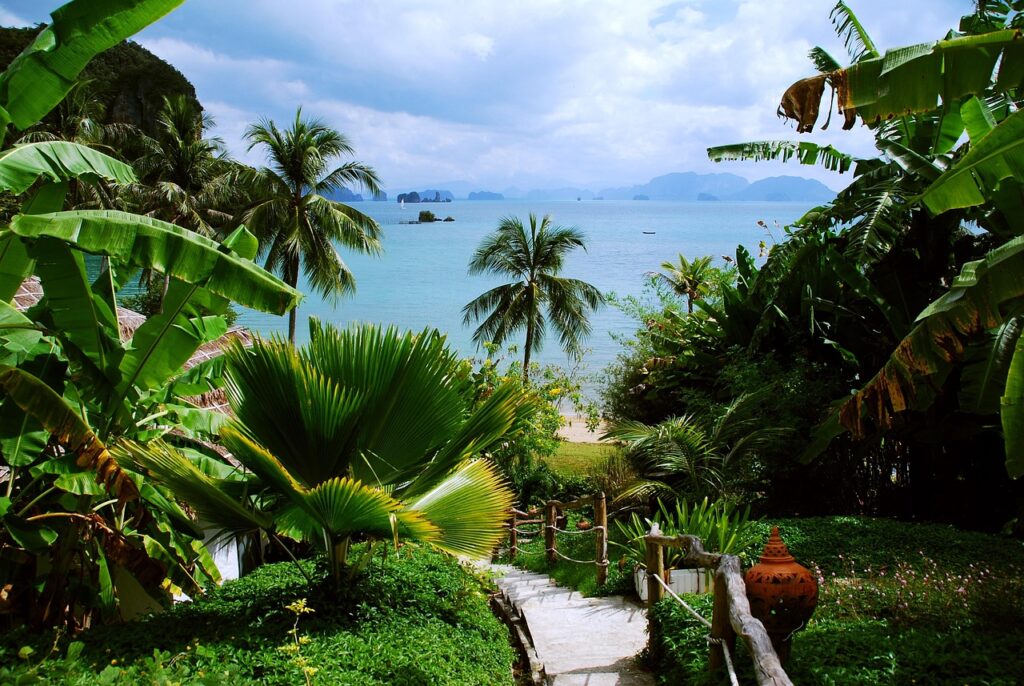
Where the rustling of leaves and the calls of gibbons once filled the forests of Thailand, today you can often hear the roar of machines and the crunching of felled trees. Human activities have left deep marks on wildlife habitats, and the effects of these interventions, also known as anthropogenic influences, threaten the delicate balance of ecosystems. From the dense rainforests to the coastal waters, the human footprint can be seen everywhere, massively affecting both the populations and the animals' natural refuges.
A central factor in this destruction is deforestation, which has converted large parts of Thailand's tropical forests into agricultural land or plantations. Especially in lowland areas, where species such as the Indochinese tiger and the Asian elephant once lived undisturbed, forests are being cleared for palm oil production or timber extraction. This clear-cutting not only increases the risk of erosion and flooding, but also destroys the livelihoods of many animals that rely on dense vegetation. The loss of such habitats forces species into ever smaller areas, resulting in conflicts with humans and a decline in genetic diversity.
The expansion of cities and settlements further increases this pressure. Natural habitats are shrinking rapidly due to soil sealing, which occurs when roads and residential areas are built. In urban fringe areas, where meadows and wetlands once provided refuge for birds like the kingfisher or amphibians like the Khao Nor Chuchi kikker, concrete and asphalt now dominate. These sealed surfaces also increase temperatures in cities, which changes local microclimates and further complicates the ability of animals to adapt.
Agricultural practices also contribute significantly to the threat. Monocultures planted in large parts of Thailand for rice or rubber replace diverse ecosystems and promote pest infestations, which are exacerbated by global warming. Large machines compact the soil, impair water and air absorption, and make it uninhabitable for many smaller species. Over-fertilization, which is often used in such intensive cultivation areas, also pollutes groundwater and thus rivers and lakes that are habitats for fish and amphibians.
Another alarming picture emerges along the coasts. Overfishing and pollution from plastic waste and industrial wastewater endanger marine species such as the whale shark and the dugong. Coral reefs, essential to marine biodiversity, are suffering from ocean acidification and warming from climate change driven by human emissions. Coastal development for tourism and aquaculture also destroys seagrass beds and mangroves, which serve as nurseries for many marine creatures.
The illegal wildlife trade poses another serious threat. Species such as the pangolin and slow loris are captured for their body parts or as exotic pets, further decimating their already dwindling populations. This practice, often driven by international networks, not only undermines species conservation but also destabilizes entire food chains by removing key species from their ecosystems.
Air and water pollution from industry, traffic and households further exacerbate the situation. Pollutants from factories and vehicles pollute forests and waterways, affecting animal health and leading to a decline in food sources. How on Shubu is highlighted, such anthropogenic influences are one of the main causes of the loss of biodiversity, as they destroy the natural basis of life for many species.
Extreme weather conditions, exacerbated by global warming, bring additional challenges. Droughts, floods and storms driven by human emissions destroy habitats and make it difficult for animals like the gaur and sambar deer to find food. Particularly in wetlands that are essential for waterfowl and amphibians, such events lead to a loss of breeding sites and food sources, endangering the reproduction and survival of many species.
Nature conservation measures
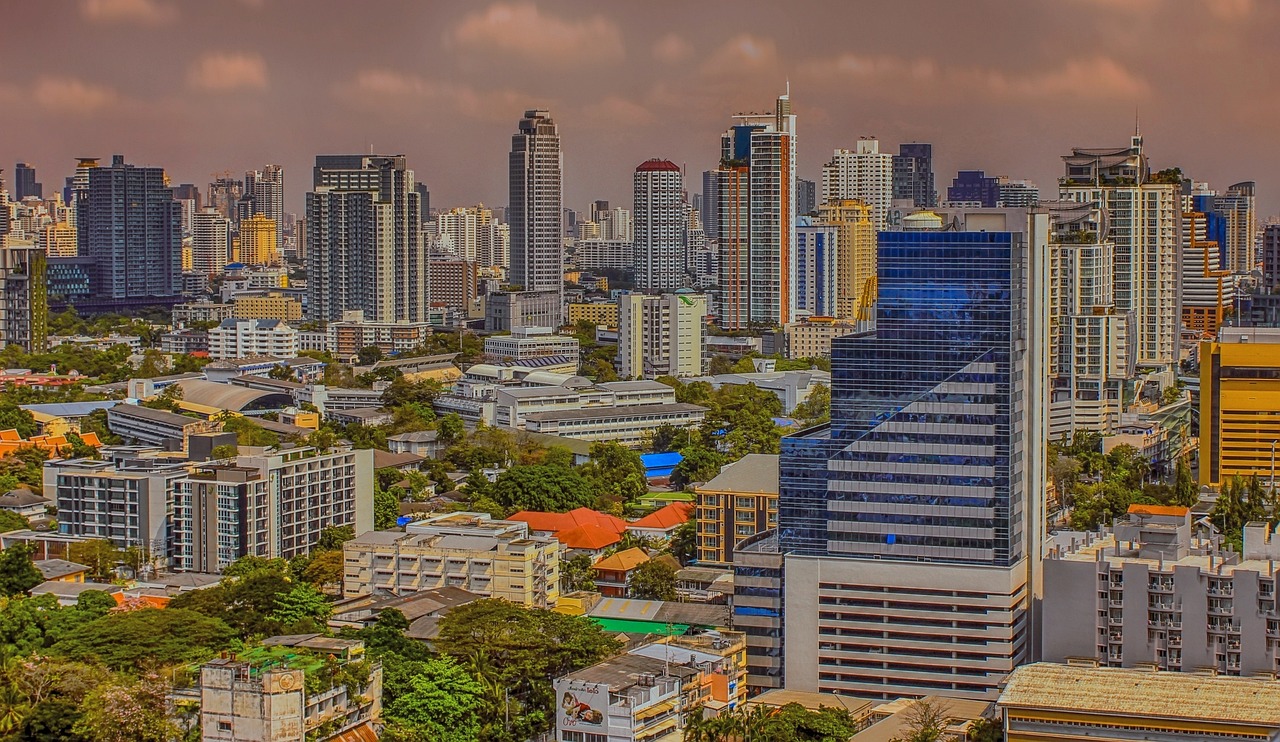
With the looming shadows that are falling over Thailand's wildlife, numerous efforts are shining like rays of hope on the horizon to preserve this country's unique biodiversity. The country is actively committed to protecting its wild inhabitants through a variety of initiatives and programs supported by the government, non-governmental organizations and committed communities. These measures range from the creation of protected areas to innovative approaches to sustainable tourism, showing that preserving nature can go hand in hand with economic progress.
A central pillar of nature conservation in Thailand are the over 150 national parks and 60 wildlife sanctuaries, which cover around 20 percent of the land area. These protected zones, such as the Thungyai-Huai Kha Khaeng Wildlife Sanctuary, designated a UNESCO World Heritage Site, provide refuges for endangered species such as the Indochinese tiger and the Asian elephant. Successful reforestation and wildlife reintroduction programs are being implemented here, not only restoring habitats but also strengthening populations of endangered species.
The Thai government has also taken targeted steps to minimize the ecological footprint of booming tourism, which, with around 35 million visitors annually, represents an enormous burden. Since November 2017, there has been a strict ban on smoking on busy beaches, supported by high fines to reduce pollution. Pilot projects to avoid waste and educate the population, as well as the temporary closure of popular places such as Maya Bay to regenerate nature, are further measures that show how seriously the country is striving to strike a balance between tourism and environmental protection.
In the field of sustainable tourism, the Green Leaf Foundation plays a significant role by introducing environmental standards for hotels. These standards require accommodations to take measures such as recycling, noise control, and water and energy conservation to reduce their environmental footprint. Such initiatives, supported by the Tourism Authority of Thailand (TAT) with certifications such as SHA for environmentally friendly practices, promote awareness of sustainable travel and offer travelers the opportunity to actively contribute to protecting nature, as on Fascination with Southeast Asia is described in detail.
Non-governmental organizations (NGOs) also make an indispensable contribution. The Wildlife Friends Foundation Thailand (WFFT) and Elephant Nature Park are dedicated to rescuing and rehabilitating animals in distress due to poaching or mistreatment. In addition to providing protection for elephants, gibbons and other species, these organizations are also involved in educating communities and visitors about the importance of wildlife conservation. Volunteer programs allow those interested to get directly involved in caring for animals or supporting local educational projects.
Eco-tourism is becoming increasingly important as a means of combining nature conservation and economic benefits. Guided tours in parks like Khao Sok or boat trips in Phang Nga Bay offer insights into untouched habitats without disturbing them. Such programs, often developed in collaboration with local communities, ensure that tourism becomes a support rather than a threat to wildlife. They promote a deeper understanding of the fragility of these ecosystems and the need to protect them.
Combating the illegal wildlife trade is another important pillar. Through increased controls and international cooperation, Thailand is trying to curb the trade in endangered species such as the pangolin and the slow loris. Such measures, supported by NGOs and government agencies, aim to reduce demand and increase penalties for poaching to ease pressure on vulnerable populations.
Collaboration between government, NGOs and the private sector is proving crucial to creating long-term solutions. Plans to expand protected areas and create wildlife corridors connecting isolated populations are on the agenda, as is promoting educational programs to raise community awareness. These collective efforts show that the path to protecting Thailand's wildlife is challenging, but not impossible.
Cultural significance of animals

Behind Thailand's temple walls and colorful markets lies a deep-rooted connection between humans and animals, revealed in myths, traditions and everyday customs. Animals hold a special place in this country's cultural landscape, acting as symbols of strength, good fortune or spiritual meaning. Their presence permeates people's stories, rituals and beliefs, which powerfully illustrates the close relationship between nature and society.
Above all, the elephant, known as “chang” in Thai, rises as a powerful emblem of the nation. As the national animal, it embodies wisdom, strength and loyalty, traits that are deeply rooted in Buddhism, which shapes the majority of the Thai population. Ancient legends say that white elephants, rare occurrences, are divine messengers and bring prosperity to the kingdom. Their depiction in temple paintings and royal ceremonies underscores their role as a sacred symbol that transcends mere nature and reaches into the spiritual sphere.
Equally important are monkeys, particularly macaques, which are often found near temples and mangroves and are referred to as “ling” in Thai. They play a central role in Thai mythology, most notably through the figure of Hanuman, the monkey god from the Ramayana epic, known as Ramakien in Thailand. Hanuman represents courage and devotion, and his portrayal in traditional dances and plays reflects admiration for the skill and playfulness of these animals. Festivals like the Lopburi Monkey Festival, where macaque monkeys are honored with food, show how deeply this appreciation is embedded in local customs.
Cats, called “meeo” in Thai, also carry cultural significance beyond their role as pets. They are considered good luck charms, and ancient traditions attribute them to the ability to bring prosperity and protection from evil spirits. The Siamese cat in particular, with its striking blue eyes, is depicted in traditional tales as a companion to royalty and nobility, underscoring its connection to wealth and prestige. This appreciation is also reflected in everyday gestures when cats in households are treated with special care.
Snakes, known as “ngu,” occupy an ambivalent position in Thai folklore, oscillating between awe and fear. As symbols of the underworld and protection, they are often associated with the nagas, mythical serpent creatures who are considered guardians of treasures and temples in Buddhist and Hindu tales. Statues and images of Nagas adorn many temples, especially along staircases, to ward off evil forces. At the same time, real snakes, particularly venomous species such as the king cobra, are viewed with caution, reflecting their dual role in culture between reverence and respect.
In rural areas, farm animals such as the water buffalo, known as kwai in Thai, play an indispensable role in traditions and everyday life. As loyal helpers in agriculture, they symbolize endurance and hard work, values that are highly valued in Thai society. Folk festivals and rituals in which buffaloes are decorated and celebrated demonstrate gratitude towards these animals, which have ensured the survival of many families over generations.
Birds such as the hornbill and the sarus crane also find their place in the cultural imagination. Their elegant forms and impressive wingspans are often depicted in artwork and stories as messengers from heaven, embodying freedom and spiritual elevation. In some regions it is believed that their appearance is a good omen, which elevates their meaning beyond mere observation of nature into the realm of symbolism, as shown on Ling app is clearly described.
The cultural connection with animals is also evident in everyday sayings and proverbs that link animal behavior with human characteristics. Someone who is particularly stubborn is compared to a buffalo, while skill is often associated with the grace of a monkey. These linguistic images illustrate how deeply wildlife has penetrated the mindset and expression of Thai society.
Research and education

Hidden behind the scenes of Thailand's lush jungles and azure waters, scientists and educators work tirelessly to unlock the secrets of this country's diverse wildlife. Through meticulous research projects and dedicated educational programs, we not only collect knowledge about over 300 species of mammals, 980 species of birds and numerous other creatures, but also raise awareness of their protection in society. These efforts bridge scientific knowledge and practical conservation to preserve Thailand's unique biodiversity for generations to come.
A central focus of the scientific work is on researching the diverse ecosystems that characterize Thailand - from dense rainforests to grasslands to coral reefs. Universities such as Chulalongkorn University in Bangkok and Mahidol University conduct extensive studies looking at the behavioral ecology and genetics of species such as the Indochinese tiger and the Asian elephant. These research projects use state-of-the-art technologies such as GPS tracking and genetic analysis to understand migration patterns, population dynamics and threats from habitat loss, which is essential for targeted conservation measures.
Field research is carried out in national parks such as Khao Yai and Khao Sok, providing valuable data on rare species such as the white-handed gibbon and the gaur. These studies, often in collaboration with international organizations such as the World Wildlife Fund (WWF), not only document the behavior and distribution of animals, but also examine the effects of climate change and human intervention. Such scientific knowledge is crucial for assessing the effectiveness of protected areas and developing strategies for habitat restoration.
In addition to academic research, educational programs play an important role in spreading knowledge about Thailand's wildlife to the general population. Initiatives such as the Wildlife Friends Foundation Thailand (WFFT) offer workshops and tours that educate both locals and tourists about the importance of species conservation. These programs often target schools and communities near shelters
Sources
- https://www.thewildlifediaries.com/thailands-animals/
- https://en.wikipedia.org/wiki/List_of_species_native_to_Thailand
- https://de.wikipedia.org/wiki/Tropischer_Regenwald
- https://www.regenwald-schuetzen.org/regenwald-wissen/faszination-regenwald/lage-und-verbreitung
- https://www.wochenblitz.com/endemische-tierarten/
- https://www.worldatlas.com/articles/thailand-animals-animals-that-live-in-thailand.html
- https://en.m.wikipedia.org/wiki/List_of_species_native_to_Thailand
- https://www.wwf.de/themen-projekte/artenschutz/rote-liste-gefaehrdeter-arten
- https://www.thainationalparks.com/
- https://www.thainationalparks.com/mu-ko-ang-thong-national-park
- https://en.wikipedia.org/wiki/List_of_birds_of_Thailand
- https://www.voegel-im-garten.de/wissenswertes/voegel-im-oekosystem/
- https://www.kinderweltreise.de/kontinente/asien/thailand/daten-fakten/tiere-pflanzen/saeugetiere-und-reptilien/
- https://en.m.wikipedia.org/wiki/List_of_reptiles_of_Thailand
- https://en.wikipedia.org/wiki/Dogania_subplana
- https://www.tagesschau.de/wissen/klima/kipppunkte-risikozone-100.html
- https://de.m.wikipedia.org/wiki/Korallenriff
- https://www.schubu.org/p936/mensch-und-umwelt#:~:text=Diese%20menschlichen%20Eingriffe%20werden%20als%20anthropogene%20Einfl%C3%BCsse%20bezeichnet.,den%20Siedlungsbau%20werden%20W%C3%A4lder%20abgeholzt%20und%20B%C3%B6den%20versiegelt.
- https://de.wikipedia.org/wiki/K%C3%B6rperliche_Aktivit%C3%A4t
- https://faszination-suedostasien.de/thailand-naturschutz/
- https://exploresiam.com/wildlife-and-nature-conservation-in-thailand/
- https://ling-app.com/de/blog/tierarten-in-thailand/
- https://hallothailand.de/fakten/thailand-tiere/
- https://www.innovativebildung.de/
- https://www.nabu.de/tiere-und-pflanzen/artenschutz/32524.html

 Suche
Suche
 Mein Konto
Mein Konto
